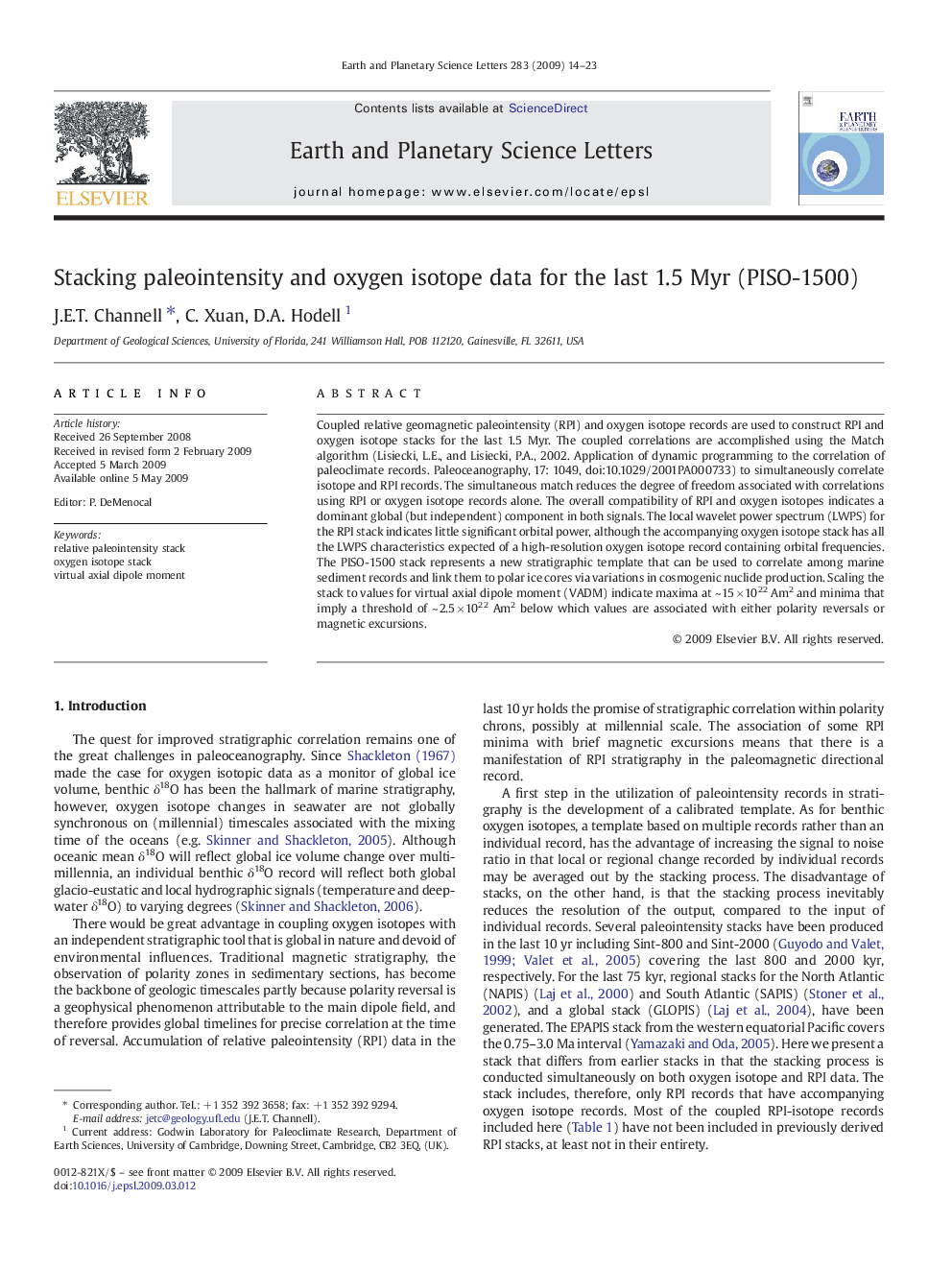| Article ID | Journal | Published Year | Pages | File Type |
|---|---|---|---|---|
| 4679021 | Earth and Planetary Science Letters | 2009 | 10 Pages |
Coupled relative geomagnetic paleointensity (RPI) and oxygen isotope records are used to construct RPI and oxygen isotope stacks for the last 1.5 Myr. The coupled correlations are accomplished using the Match algorithm (Lisiecki, L.E., and Lisiecki, P.A., 2002. Application of dynamic programming to the correlation of paleoclimate records. Paleoceanography, 17: 1049, doi:10.1029/2001PA000733) to simultaneously correlate isotope and RPI records. The simultaneous match reduces the degree of freedom associated with correlations using RPI or oxygen isotope records alone. The overall compatibility of RPI and oxygen isotopes indicates a dominant global (but independent) component in both signals. The local wavelet power spectrum (LWPS) for the RPI stack indicates little significant orbital power, although the accompanying oxygen isotope stack has all the LWPS characteristics expected of a high-resolution oxygen isotope record containing orbital frequencies. The PISO-1500 stack represents a new stratigraphic template that can be used to correlate among marine sediment records and link them to polar ice cores via variations in cosmogenic nuclide production. Scaling the stack to values for virtual axial dipole moment (VADM) indicate maxima at ~ 15 × 1022 Am2 and minima that imply a threshold of ~ 2.5 × 1022 Am2 below which values are associated with either polarity reversals or magnetic excursions.
